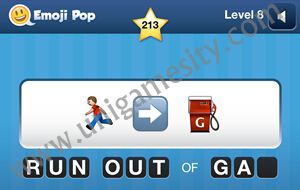iOS Games
Emoji Pop Answers: Level 8 – 190 to 8 – 229 Cheats

We are back, as promised, with more Emoji Pop answers, and this article is going to give you the Emoji Pop level 8 answers for all the 40 puzzles in this level, complete with screenshots and details on each puzzle. In other words, the perfect walkthrough for Emoji Pop level 8 and even though the puzzles themselves will be randomized, you will have them all here!
You might need more help with other Emoji Pop levels, so make sure to check out the entire archive of answers, or simply go one step back and look at the level 7 answers. If it’s level 8 where you are stuck at, check out the Emoji Pop Level 8 answers below and you will immediately find what you’re looking for!
Emoji Pop Answers: Level 8 – 190
Images: Recycle sign and piece of paper
Answer: Recycle paper
Emoji Pop Answers: Level 8 – 191
Images: Lips speaking, ear
Answer: Secret
Emoji Pop Answers: Level 8 – 192
Images: Tiger and prawn
Answer: Tiger prawn
Emoji Pop Answers: Level 8 – 193
Images: Plane, US Flag and 1
Answer: Air Force One
Emoji Pop Answers: Level 8 – 194
Images: Club and pill
Answer: Club med
Emoji Pop Answers: Level 8 – 195
Images: Punch, spark and club
Answer: Fight club
Emoji Pop Answers: Level 8 – 196
Images: Victory sign and lady in red dress
Answer: Victory dance
Emoji Pop Answers: Level 8 – 197
Images: Horse and arm
Answer: Horsepower
Emoji Pop Answers: Level 8 – 198
Images: Car and man swimming
Answer: Carpool
Emoji Pop Answers: Level 8 – 199
Images: Speaker and musical sign
Answer: sound of music
Emoji Pop Answers: Level 8 – 200
Images: UK Flag and tennis ball
Answer: Wimbledon
Emoji Pop Answers: Level 8 – 201
Images: Cat and zzz
Answer: Cat nap
Emoji Pop Answers: Level 8 – 202
Images: Clock and cup of coffee
Answer: Afternoon tea
Emoji Pop Answers: Level 8 – 203
Images: Fingers pointing at each other and wave
Answer: Waiting in line
Emoji Pop Answers: Level 8 – 204
Images: Three babies and a building
Answer: Kindergarten
Emoji Pop Answers: Level 8 – 205
Images: Ferris wheel and two bags of money
Answer: Wheel of fortune
Emoji Pop Answers: Level 8 – 206
Images: Alien head and rocket
Answer: UFO
Emoji Pop Answers: Level 8 – 207
Images: Goat and tea
Answer: Goatee
Emoji Pop Answers: Level 8 – 208
Images: No sound and night icoon
Answer: Silent night
Emoji Pop Answers: Level 8 – 209
Images: Fish caught in rod and half-moon
Answer: Dreamworks
Emoji Pop Answers: Level 8 – 210
Images: Snake, plus sign, foot prints
Answer: Lizard
Emoji Pop Answers: Level 8 – 211
Images: Bear and grill sign
Answer: Bear Grylls
Emoji Pop Answers: Level 8 – 212
Images: Clock, rocket, clock
Answer: Time Travel
Emoji Pop Answers: Level 8 – 213
Images: Man running, arrow right and gas pump
Answer: Run out of gas
Emoji Pop Answers: Level 8 – 214
Images: Two sun icons and calendar date July 17
Answer: Brighter Day
Emoji Pop Answers: Level 8 – 215
Images: Eyes and musical signs
Answer: iTunes
Emoji Pop Answers: Level 8 – 216
Images: License, Gun, Skeleton
Answer: License to kill
Emoji Pop Answers: Level 8 – 217
Images: Syringe, tomato and cocktail
Answer: Bloody Mary
Emoji Pop Answers: Level 8 – 218
Images: Skeleton and eyes
Answer: Death stare
Emoji Pop Answers: Level 8 – 219
Images: Tennis and arm
Answer: Tennis elbow
Emoji Pop Answers: Level 8 – 220
Images: Lemon and car
Answer: Lemon car
Emoji Pop Answers: Level 8 – 221
Images: Angel and money
Answer: Angel money
Emoji Pop Answers: Level 8 – 222
Images: Finger pointing down and earth icon
Answer: Down to earth
Emoji Pop Answers: Level 8 – 223
Images: Orange, strawberry, pineapple and a fist
Answer: Fruit punch
Emoji Pop Answers: Level 8 – 224
Images: Pen and two boy icons
Answer: Pen Pals
Emoji Pop Answers: Level 8 – 225
Images: Lady with crown and frog
Answer: Princess and the frog
Emoji Pop Answers: Level 8 – 226
Images: Girls holding hands, buildings at night and right arrow
Answer: Girls night out
Emoji Pop Answers: Level 8 – 227
Images: Wristwatch and dog
Answer: Watch dog
Emoji Pop Answers: Level 8 – 228
Images: Bell and wave
Answer: Bell curve
Emoji Pop Answers: Level 8 – 229
Images: Cigarette and eyes
Answer: Smokey eyes
And this is it! We have managed to complete the eighth level in this game, but we still have some puzzles left, so make sure you check back with us soon for more answers!
UPDATE: We finally managed to publish a new level: we have Emoji Pop level 9 answers here, make sure to check them out if you need some extra help!
Gaming News
Swiping, Tapping, and Tilting: How Mobile Games Are Played Today

It’s crazy to think mobile games started with super basic stuff like Snake on old-school Nokia phones. Now, thanks to touchscreens and motion sensors, playing games on our phones feels more immersive than ever. Whether it’s swiping to cast spells, tilting to steer race cars, or just furiously tapping buttons, mobile gaming has come a long way from static keypads of the past.
How It Was
In the beginning, little keypads were the only controls we had to work with. Remember playing Brick Breaker on their BlackBerry, anyone? Then, the accelerometer changed everything. Suddenly, we could just tilt our phones to do all kinds of things like aim angry birds, balance stacks of blocks, even steer cars in racing games. Way better than pressing little arrows!
Of course, as screens got more advanced, mobile games exploded into all kinds of genres, from puzzles to 3D adventures. Multitouch displays, in particular, are what really enabled natural feeling gesture controls.
Swiping Changes the Game
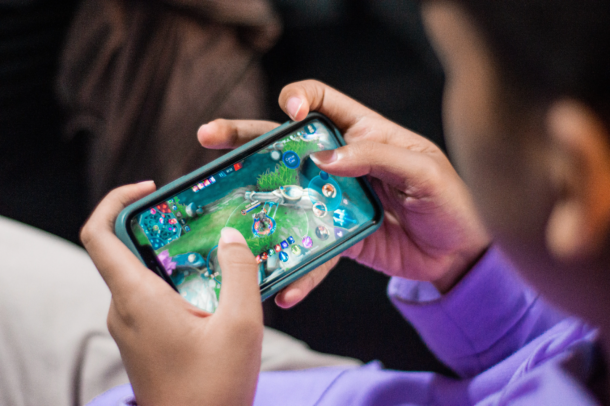
These days, swiping is easily one of the most common ways we interact with mobile games. You’ll find it everywhere, from temples you raid in endless runners like Temple Run to baseball diamonds when batting in MLB Tap Sports Baseball. Swiping not only feels super intuitive but also adds velocity and immediacy, perfect for fast-paced games.
Even slower-paced games use swipes for all kinds of game mechanics, like directing troops across battlefields in strategy games such as Clash of Clans. No matter the genre, swiping works because it feels so smooth, direct, and responsive. Not to mention, it’s just plain fun!
Tapping into Gameplay
Tapping will always be one of the best ways we can interact with phones. After all, it’s how we click links, type messages, and snap pics. For gaming, taps are perfect for delivering pinpoint precision. There’s nothing quite as satisfying as nailing a perfect note streak in games like Piano Tiles by tapping right on the beat.
You’ll also find that tapping makes snappy navigation through menus and UI thanks to its accuracy and responsiveness. Most games use taps for activating fundamental stuff like making your character jump, shoot, or interact with objects in the game world. It’s just so reliable!
Hypercasual games, in particular, thrive on simple yet addictive tap mechanics around sorting colors, popping bubbles, merging objects, and the like. When gameplay boils down to pure interactivity, nothing beats good old-fashioned screen tapping.
Getting Physical with Motion Controls
Phones now pack all kinds of motion sensors that track positioning and tilt along multiple axes. It allows for a myriad of gesture controls that add physicality and mimic real actions. For example, you can cast a line by flicking your phone while fishing in Ridiculous Fishing. Steering vehicles in racing games feels super tactile by tilting your phone to control direction. Even party games get in on the action with shaking or wiggling gestures detecting your phone’s movements.
Anything that gets us moving beyond just staring at the screen helps create moments of skill-based mastery. You feel much more engaged pulling off tricky shots in pool games by adjusting just the right angle or keeping teetering structures from collapsing with careful tilting. That sense of physical feedback goes a long way toward gameplay immersion.
Voice, AR, and Beyond
With phone cameras, mics, and sensors improving by the generation, we’re beginning to see radical new control schemes. Augmented reality transforms the world around you into a game environment like we’ve seen with monumental successes like Pokémon GO. Calling plays or audibling routes by literally yelling at your phone has also created hilarious moments playing Madden NFL Mobile. Heck, the camera can even scan objects to import them into games. The possibilities seem endless as technology progresses!
But with all these advancements, the most crucial thing developers can do is make sure their games remain accessible through difficulty settings, customizable controls, and assist modes. That way, anyone can tailor things to their personal playstyle and limitations. Gaming needs to be fun and inclusive for everybody, after all!
With new mobile games flooding app stores every single day, it feels risky trying out some random new title. That’s where special apps like Cash Giraffe come in handy. They actually give you money just for testing out new mobile games with no strings attached!
Where Are We Headed?
It’s anyone’s guess where things go next. Controllers are becoming more common to make mobile gaming feel console quality. Tools like Apple Pencil and Bluetooth styluses could let us draw playfields or game elements. New sensors might even track eye movements for hands-free control. The future is filled with possibilities!
For now, though, as long as developers keep innovating with intuitive tap, tilt, and swipe gestures, mobile games should have no problem staying fun and immersive. Just try not to smash your phone in celebration next time you pull off an epic comeback!
iOS Games
Is it harder to qualify for iOS requirements or Android requirements for apps?
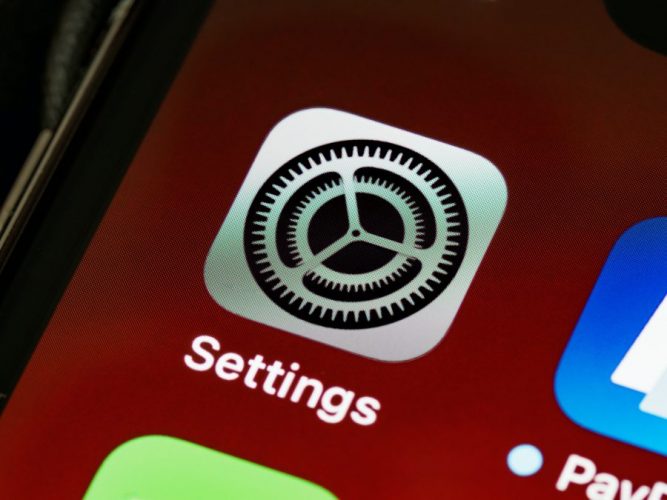
In today’s digital age, mobile applications have become a crucial component of everyday life. They provide users with access to a wide range of services, entertainment, and information at their fingertips. However, creating a mobile app that works seamlessly on both iOS and Android platforms can be a daunting task. Developers need to ensure that their app meets the strict guidelines set by both platforms to ensure a smooth user experience.
The iOS and Android platforms have their own unique set of requirements and guidelines that must be followed for an app to be approved and made available to users. These guidelines include technical requirements, design standards, and content policies, among others. To ensure that an app reaches the largest possible audience, it is crucial that it meets the requirements of both platforms.
In this blog post, we will examine the question of which platform is harder to qualify for, iOS or Android requirements, using a casino app as an example. We will explore the specific requirements for casino apps on both platforms, the challenges developers face in meeting these requirements, and provide insights into which platform is more difficult to qualify for. By the end of this post, readers will have a better understanding of the requirements for developing mobile apps and the challenges faced by developers in meeting these requirements.
Overview of iOS and Android Requirements for Apps
To develop a successful app, it is crucial to understand the guidelines and requirements set by both iOS and Android platforms. Here’s an overview of the general requirements for apps on both platforms:
User Interface Guidelines: Both iOS and Android platforms have their own unique user interface guidelines that app developers must follow. These guidelines provide recommendations on designing app icons, typography, color schemes, and other visual elements to ensure a consistent and user-friendly experience.
Technical Requirements: App developers must ensure that their apps meet the technical requirements set by both platforms. For example, the app must function properly on the latest versions of the operating system, use appropriate security protocols, and avoid unnecessary battery consumption.
Content Policies: Both iOS and Android platforms have policies governing the type of content that can be published on their respective app stores. These policies cover a range of topics, including adult content, intellectual property infringement, and deceptive practices. Developers must ensure that their apps meet these content policies to avoid rejection from the app store.
While the general requirements are similar, the specific guidelines and approval processes for iOS and Android platforms differ in several ways. For example, iOS has a more stringent approval process compared to Android. The App Store review process can take several days, and the approval criteria are often subjective. In contrast, Android has a more lenient approval process, with apps typically available for download on the Google Play Store within a few hours of submission.
Additionally, iOS has a closed ecosystem that limits the apps available to users. Developers must adhere to Apple’s strict policies and guidelines for inclusion in the App Store. On the other hand, Android has an open ecosystem that allows for more flexibility in app development and distribution. Developers can publish their apps on third-party app stores or distribute them directly to users.
Overall, developers must understand the differences between iOS and Android requirements and tailor their development approach accordingly. While both platforms have their unique challenges, meeting their requirements is essential for app success.
Requirements for a Casino App on iOS and Android
Developing a casino app for iOS and Android requires careful attention to platform-specific requirements and regulations. Here’s an overview of the specific requirements for casino apps on both platforms:
Regulations on Gambling Apps: Both iOS and Android platforms have strict regulations on gambling apps, which are intended to protect users from fraudulent activity. Apple only allows real-money gambling apps in certain countries, and developers must hold a valid gambling license in those countries. On the other hand, Android allows real-money gambling apps in many countries, but developers must comply with local laws and regulations.
Policies on In-App Purchases: In-app purchases are a significant source of revenue for casino apps. However, both platforms have policies governing in-app purchases to ensure a fair and transparent user experience. Apple requires all in-app purchases to be processed through its own payment system, which takes a 30% commission on all transactions. In contrast, Android allows developers to use third-party payment systems and takes only a 15% commission on transactions.
Requirements for App Design and Functionality: Both iOS and Android platforms have requirements for app design and functionality. These requirements cover various aspects of the app, including user interface, navigation, and security. For example, apps must use secure authentication protocols and encryption to protect user data.
When it comes to casino apps, there are some significant differences between the requirements for iOS and Android. For example, Apple does not allow apps that offer gambling services to minors, and developers must comply with strict age verification requirements. Android also has age restrictions but allows for more flexibility in the types of gambling apps that can be developed and published.
Another significant difference between iOS and Android is the availability of real-money gambling apps. While iOS only allows real-money gambling apps in certain countries, Android allows these apps to be developed and published in many countries. This can impact the development approach and revenue potential of a casino app.
In conclusion, developing a casino app for iOS and Android requires careful consideration of platform-specific requirements and regulations. While there are similarities in the requirements, there are also notable differences that must be considered. Click here to see these casinos and their respective apps to better understand the design and functionality requirements of casino apps on both iOS and Android platforms.
Challenges of Meeting iOS and Android Requirements for Casino Apps
Developing a casino app that meets the requirements of both iOS and Android platforms can be a complex and challenging task. Here are some of the common challenges that developers face:
Compliance with Regulations: Casino apps are subject to strict regulations on both iOS and Android platforms. This can include requirements related to gambling licenses, age verification, and responsible gambling. Developers must ensure that their apps comply with these regulations to avoid rejection from the app store.
Payment Systems: In-app purchases are a significant source of revenue for casino apps, but the payment systems used by iOS and Android platforms differ significantly. Developers must carefully consider which payment system to use and ensure that they comply with the policies of the platform.
User Interface: Both iOS and Android platforms have unique user interface guidelines that app developers must follow. These guidelines provide recommendations on designing app icons, typography, color schemes, and other visual elements to ensure a consistent and user-friendly experience. However, designing a user interface that meets the requirements of both platforms can be challenging, especially when dealing with complex user interfaces and game mechanics.
Security: Casino apps require robust security measures to protect user data and prevent fraudulent activity. Developers must ensure that their apps use secure authentication protocols and encryption to safeguard user data.
While the challenges faced by developers in creating casino apps for iOS and Android platforms are similar, there are notable differences. For example, Apple has stricter age verification requirements for gambling apps than Android, which can be a significant challenge for developers. Additionally, the payment systems used by the two platforms differ significantly, with Apple taking a 30% commission on all in-app purchases compared to Android’s 15% commission.
In conclusion, developing a casino app that meets the requirements of both iOS and Android platforms can be a challenging task. Developers must navigate complex regulations, payment systems, user interface guidelines, and security measures. While there are similarities in the challenges faced, there are also notable differences that must be considered. By understanding these challenges, developers can create high-quality casino apps that meet the requirements of both platforms.
Conclusion
In conclusion, developing a mobile app that meets the requirements of both iOS and Android platforms can be a challenging task. In this blog post, we explored the specific requirements for a casino app on both platforms, the challenges developers face in meeting these requirements, and provided insights into which platform is harder to qualify for based on the example of a casino app.
We learned that both iOS and Android platforms have unique requirements related to user interface guidelines, technical requirements, content policies, and regulations on gambling apps and in-app purchases. While there are similarities in the requirements, there are also notable differences that must be considered.
In terms of which platform is harder to qualify for, the answer may vary depending on the specific app being developed. However, in the case of a casino app, iOS is generally considered to be the more challenging platform due to its stricter regulations, more stringent approval process, and higher commission rates for in-app purchases.
As mobile app development continues to evolve, it is essential for developers to stay up-to-date on the requirements and guidelines set by both iOS and Android platforms. By doing so, they can create high-quality apps that meet the needs of their target audience.
We encourage readers to share their experiences developing apps for iOS and Android platforms in the comments below. Your insights can help others navigate the challenges of mobile app development and contribute to the continued growth of the mobile app industry.
iOS Games
The Benefits of Mobile Apps for Gaming: How They Enhance the Gaming Experience

In today’s digital age, mobile apps have become an essential part of our lives, and gaming is no exception. With the rise of smartphones and tablets, mobile gaming has become increasingly popular over the years. As a result, many game developers have started creating mobile apps to enhance the gaming experience of their users. In this article, we’ll explore the benefits of mobile apps for gaming and how they can enhance the gaming experience.
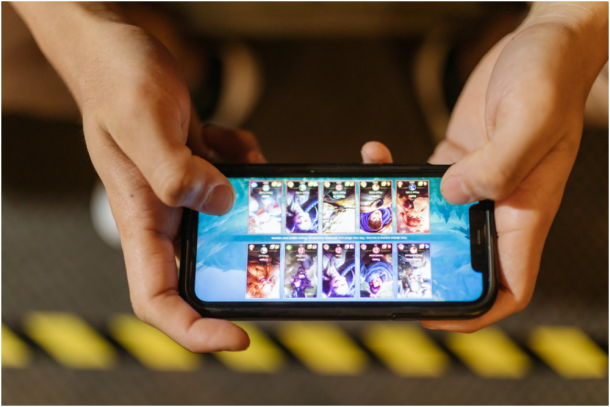
Improved User Experience
One of the main benefits of mobile apps for gaming is the improved user experience. Mobile apps are designed to provide a seamless experience for users, with intuitive and user-friendly interfaces. With mobile apps, users can easily navigate through the game, access different levels, and complete challenges. Additionally, mobile apps provide a more immersive experience for users with features such as high-quality graphics, sound effects, and animations.
Accessibility
Mobile apps also offer greater accessibility compared to traditional gaming methods. With mobile apps, users can play games anytime, anywhere, without the need for a desktop computer or gaming console. This makes gaming more convenient for users who are always on the go, and also for those who prefer to play games on their mobile devices. Additionally, mobile apps are compatible with both iOS and Android devices, making them accessible to a wider audience.
Social Integration
Mobile apps also provide social integration features that allow users to connect with other gamers. This feature allows users to compete against each other, share their scores, and even invite their friends to play the game. Social integration is particularly beneficial for multiplayer games, where users can team up with other players to complete challenges and win rewards.
Mobile App Security
Mobile apps are designed with security in mind, with measures in place to protect user data and prevent unauthorized access. Game developers take security seriously, and they work hard to ensure that their apps are secure and safe for users. Additionally, app stores such as Google Play and the App Store have strict guidelines for app developers to follow, which helps to ensure that users can download and use mobile apps safely.
Also, you can find mobile apps for the Best Online Casinos from the Experts at L7B Canada. They have years of experience in reviewing and recommending the best online casinos to users. The team of experts is dedicated to providing unbiased and comprehensive reviews of online casinos, to help our users make informed decisions. They believe that mobile apps are an important part of the online casino experience, and they recommend the best online casinos with mobile apps to users. With their expertise, you can be sure that you are playing at the best online casinos with mobile apps.
In conclusion, mobile apps have revolutionized the gaming industry, and their benefits cannot be ignored. From improved user experience to greater accessibility and social integration, mobile apps offer a lot to gamers. Additionally, mobile apps are designed with security in mind, providing users with a safe and secure gaming experience. At L7B Canada, we understand the importance of mobile apps in the online casino industry, and we recommend the best online casinos with mobile apps to our users. So, if you’re looking for the best online casinos with mobile apps, look no further than the experts at L7B Canada.
-

 Guides4 years ago
Guides4 years ago6 Proven Ways to Get more Instagram Likes on your Business Account
-
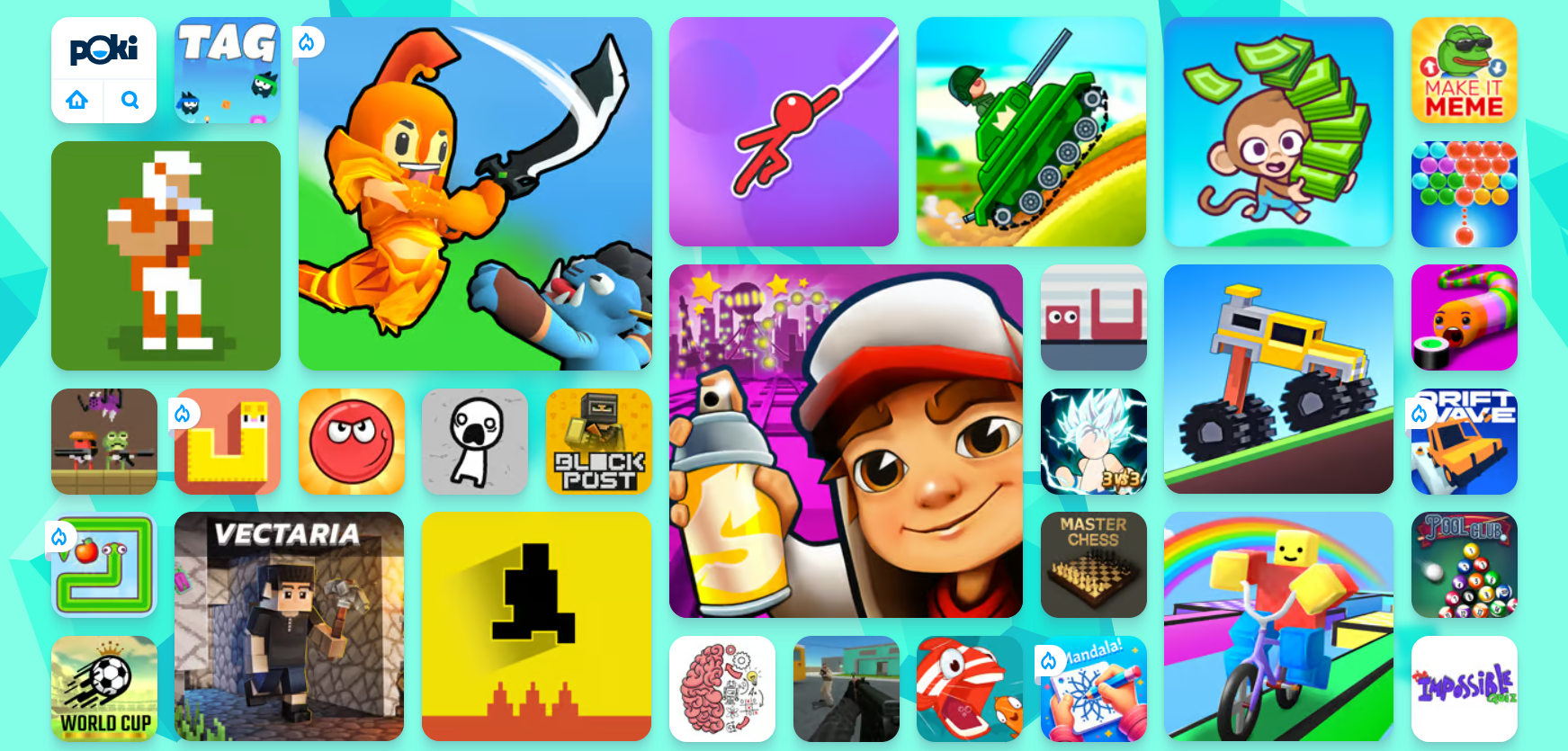
 Guides1 month ago
Guides1 month agoExplore 15 Most Popular Poki Games
-

 Mainstream9 years ago
Mainstream9 years agoBioWare: Mass Effect 4 to Benefit From Dropping Last-Gen, Will Not Share Template With Dragon Age: Inquisition
-

 Other3 years ago
Other3 years agoHow to Improve Your Research Skills on the Internet
-
Mainstream15 years ago
The Sims 3: How to Correct the Disc Authentication Error
-
Guides15 years ago
Locked Room Escape Walkthrough
-

 Mainstream7 years ago
Mainstream7 years agoThe Benefits of Playing Online Casino Games
-
Social Games14 years ago
Backyard Monsters Tips, Tricks & Strategy























